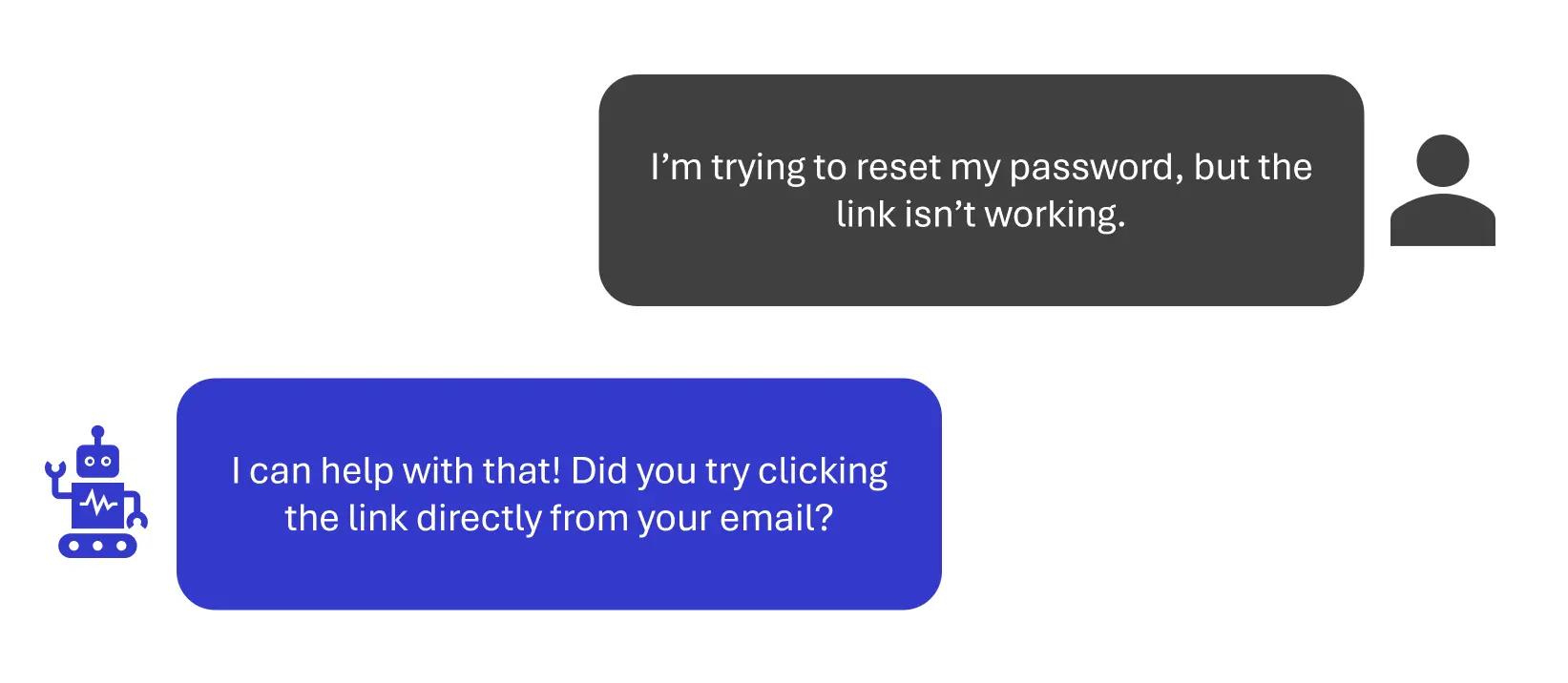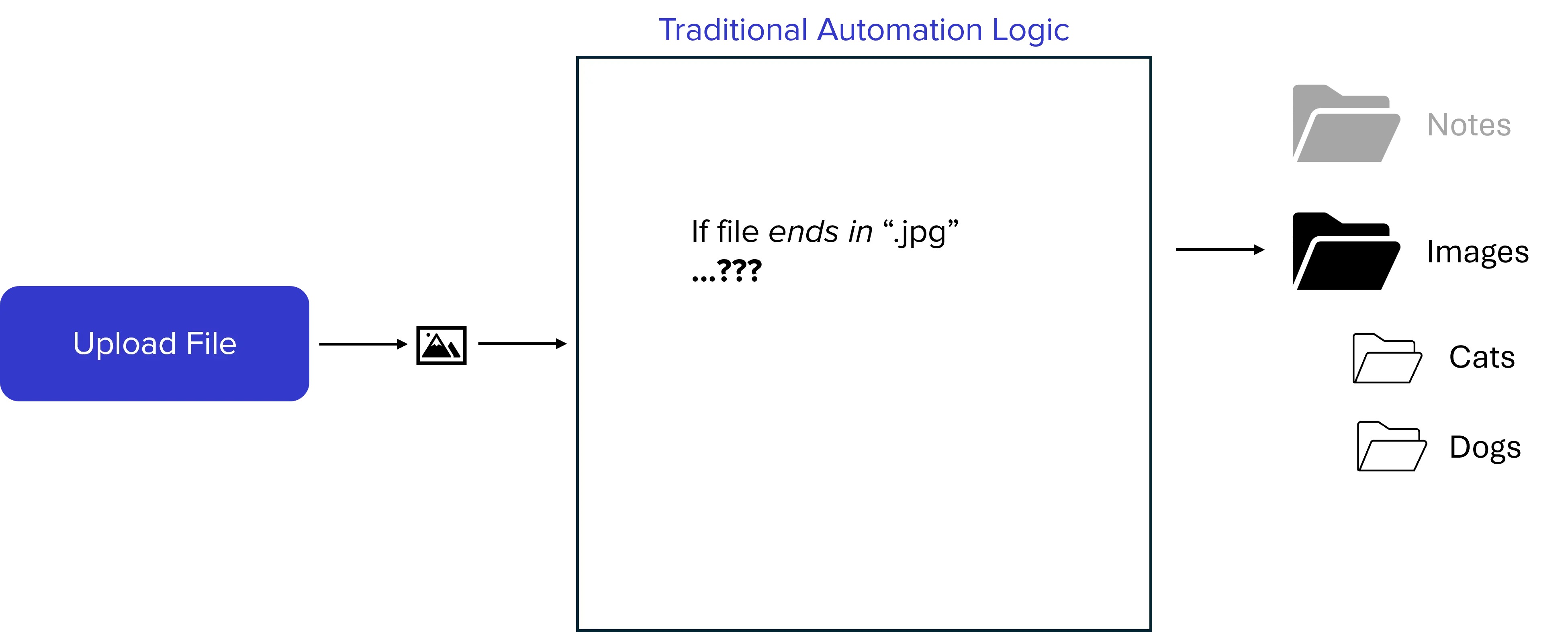
How Imperfect AI is Still a Game-Changer for Businesses
April 26, 2024
Opinion Piece

April 26, 2024
Opinion Piece
Originally published on LinkedIn here.
Sign up to our mailing list by filling in the form below.

Article by Eman Zerafa
CTO at Cleverbit Software
Want to discuss anything software with the author?
Schedule a meeting here.
Remember KITT from Knight Rider? That talking, self-driving supercar started my lifelong obsession with technology. As a kid, I built cardboard dashboards and tried to make my scooter “drive itself” – I was determined to have my own AI companion!

Back then, everyone thought that in a few years time, probably by the time I turned 18, we’d all have such supercars – flying ones even! Well, when I turned 18, and finally got my drivers licence, I didn’t get a supercar.

In fact, all I got was a knackered old Subaru. Nowhere near fancy, it definitely couldn’t talk, and to be honest, it barely ran.
That’s the tech world’s inside joke, isn’t it? Every amazing breakthrough is always “20 years away”. Fusion energy, quantum computers, hotels on Mars… heck, even Herbert A. Simon predicted in 1965 that machines would match human intelligence within two decades. It’s been 6 decades since, and we’re not there yet.

Remember those AI chatbots that always seemed a bit…underwhelming? Well, ChatGPT has shaken things up. Its arrival triggered a level of AI hype we haven’t seen before, and with good reason. After years of mediocre Siri responses and unhelpful website bots, ChatGPT’s ability to actually understand and engage is a game-changer.
Note: While I often use ChatGPT as an example throughout this article, the concepts discussed apply to many of the advanced AI language tools currently available. I encourage you to explore the range of options from companies like Google, Anthropic, and others. We’ve also done a comparison between ChatGPT and Gemini in one of our articles.
I was blown away by ChatGPT 3.5, and things have only escalated since. Finally, an AI bot that understands us! GPT-4 was a massive leap forward, but it has since been surpassed. This year, we anticipate the release of GPT-5. We’ve also seen other impressive AI tools, like OpenAI’s Sora and Udio’s AI music maker, dubbed the ‘ChatGPT moment for AI music’. Suddenly, everyone’s racing towards Artificial General Intelligence (AGI) – the holy grail of AI that could match human smarts.
This isn’t just talk – we’re seeing wild investments. GPT-4 alone is rumoured to have cost OpenAI around $100 million to train! Microsoft plans to pump $100 billion into their “Stargate” AI data center. Everyone seems to be betting big on this tech.
We might not have AGI quite yet, but the shift is undeniable. So, what does this mean for the future? Is this the breakthrough we’ve waited been waiting for?
And, most importantly, am I getting my AI-powered supercar anytime soon?
I’ve often heard the argument that today’s AI isn’t truly useful because it’s “just fancy autocomplete” rather than real thinking. While it’s fascinating to explore the technical details of these models, let’s be honest – that shouldn’t be our main yardstick.
Think about it: Calculators are “dumb” – they just follow programmed rules. Spreadsheets? Same thing. Yet, no one questions how useful they are for solving complex problems. AI, however it works under the hood, is starting to do the same. It can generate creative text, translate languages more smoothly than ever, and find information at lightning speed.
Technology is a tool. We should judge it by the problems it solves, not the elegance of its inner workings.
I’ve written more about this in a previous article.
To understand how AI expands our capabilities, it’s helpful to grasp how it differs from traditional automation:
Traditional automation is like a meticulous chef following a precise recipe. The programmer defines clear-cut rules: “If you see ‘invoice,’ send it to accounts. If you see ‘CV,’ send it to HR.” This works superbly for predictable tasks with well-defined parameters.
Imagine a chef training by observing hundreds of successful meals instead of relying on a recipe. AI works similarly, learning from vast amounts of data. Let’s say you want to separate cat photos from dog photos. With traditional automation, you’d struggle to write rules defining every possible cat and dog breed. AI, after studying thousands of labelled images, starts to ‘understand’ the visual patterns that distinguish cats and dogs.
AI thrives where rules become blurry. It learns and adapts over time. The downside? Since it deals with probabilities, there’s potential for error, especially when a situation differs significantly from its training data.
Example: Evolving File Management
Let’s look at a scenario with a simple file upload example:
Traditional Automation – Clear Rules: You start with a system where files ending in “.txt” go to a Notes folder, “.jpg” to Images, etc. The rules are clear, and there is no ambiguity. This works well enough initially.

AI to the Rescue – Recognising ‘Content’: Now, the task is to separate cat and dog images within your Images folder.

Traditional automation hits a wall. It is impossible to write specific rules that can differentiate between cats and dogs. It is too ambiguous of a task.

AI, doesn’t work with preset rules, instead it is trained on many cat and dog photos. It learns to analyse the image content itself to make the distinction.
This is incredibly powerful, but because the situation is ambiguous, AI might misidentify a Chihuahua as a cat if it looks particularly fluffy.
Today’s AI can make a real difference for people and businesses, both by boosting efficiency and driving better decision-making, all leading to greater innovation. Here’s how it can help:
Traditional software excels at automating repetitive, rule-based tasks. But AI takes it to the next level. Let’s say you want to filter your inbox. A simple rule might move emails containing the word “offer” to junk. However, AI can understand the intent of an email – is it a genuine message or just spam? This unlocks much more powerful, nuanced automation.
Complex decisions become easier when AI can find patterns in huge amounts of data and predict potential outcomes. It can act like a super-powered research assistant, pulling up historical data to inform your choices and even simulating future scenarios.
Imagine a world where AI handles the mundane, and people have more time to focus on strategy, creativity, and solving tough problems. That’s where we’re headed. Tools like Google DeepMind’s GNoME, which uncovered millions of new crystal structures, are just the beginning. Even on a smaller scale, AI assistants like ChatGPT can be your brainstorming partner, sparking new ideas and refining your plans.
This is a classic scenario where companies have vast amounts of documentation or data to sift through. Retrieval-Augmented Generation (RAG) offers an elegant solution. In this technique, a generative model like GPT-4 accesses external sources, like databases, for more factual knowledge.
We built a Teams bot based on RAG that taps into our company’s HR policy database. Now, any employee can ask HR-related questions directly within Microsoft Teams – questions like annual leave entitlements, procedures for reporting sickness, or handling sensitive data.
Our recruitment process includes a practical task, but interviewing hundreds of candidates annually poses a risk: disappointed applicants might leak the tasks. To keep them fresh and minimise leaks, we’re developing an AI solution to generate unique tasks for each candidate. Clever prompting ensures the tasks align with specific criteria, and they’re automatically tested to maintain our standards.
The Challenge: A farmer with 200 acres of crops* faces a dilemma. Regular pesticide use, while protecting crops, carries environmental and regulatory costs. However, waiting until disease is obvious risks crop loss. Manually inspecting such a large area for early signs of trouble is simply impossible.
The AI Solution: Drones equipped with cameras can systematically capture images of the entire farm daily. AI trained to recognise patterns of crop disease analyses these images. Upon detecting potential issues, the farmer receives an alert along with the location, allowing for timely, targeted intervention.
Trade-offs: As with any AI system, there’s potential for misidentification (e.g., mistaking a beneficial insect for disease). However, the benefits far outweigh the occasional false positive. This solution empowers the farmer to make informed, precise decisions, optimising pesticide use while protecting his harvest.
*this farmer is probably not in Malta.
Chatbots traditionally carried a bad reputation, often due to their frustrating inability to understand users. As mentioned earlier in the article, things have changed dramatically with the advent of tools like ChatGPT. Here are a few strategies to further mitigate those issues: clear labelling as a bot establishes realistic expectations, seamless escalation paths to human agents prevent frustration, and leveraging the latest large language models (LLMs) allows for more natural and helpful conversations.
The cost of implementing AI can vary wildly – bespoke solutions are expensive, while the boom in off-the-shelf AI applications offers lower barriers to entry. However, the easiest way to start is by embracing widely available, affordable tools.
Think of it like this: software developers are demonstrably more productive with tools (such as GitHub Copilot). That’s not just a study’s findings, it’s our real-world experience – devs are quicker and more engaged when equipped with AI assistance. Best of all, these tools are often very affordable.
But here’s the critical part: just like buying powerful software for someone with no relevant skills, providing AI tools without training is pointless. With the right training, your employees can use these tools to:
This isn’t just about efficiency; it’s about survival. AI is already decimating entire industries like freelance writing and stock photography. Videographers, graphic designers…who’s next? How long until your profession is directly impacted? Imagine a competitor who halves their operating costs and doubles production thanks to AI. Can you afford to be left behind? This isn’t some distant sci-fi scenario, it’s happening now.
While you’re embracing these tools, don’t forget about your data. Clean, well-prepared data is the fuel that powers effective AI. By taking these steps – tools, training, and data quality – you’ll be positioning your business for success in the AI-driven future.
Cloud-based AI platforms like Microsoft Azure streamline AI implementation. Consider a customer support scenario: Azure’s speech recognition can transcribe calls, its language models can analyse sentiment, and its content moderation tools can flag problematic interactions. This empowers businesses to automate support tasks and gain valuable insights from customer feedback.
While AI offers tremendous potential to boost productivity, there are crucial considerations businesses must not ignore:
While AI’s inner workings might seem simplistic, and it can certainly make mistakes, to dismiss AI on these grounds would be a grave error. AI surpasses human capabilities in several key areas: speed, iteration, and most notably, its vast access to information. Imagine a marketing team able to test a dozen campaign slogans in the time it takes to brainstorm three – that’s AI-powered competitive edge. It might not nail the perfect image or draft the perfect document on the first try, but its low cost means you can generate twenty variations in mere seconds. This applies across the board – from text to music, to analysis and ideas.
With careful prompting, AI’s output improves significantly. And because AI is so affordable, you can afford to run tasks repeatedly to get the desired result. Of course, human oversight is essential to catch and correct errors.
Traditional automation has taken us far, but AI is the next transformative frontier. With AI as part of the daily tool and workflow, tasks and processes are cheaper, better, and faster.
Should you like to have a private conversation to discuss how software, and AI can help your business, feel free to contact us.
Headquartered in Europe, Cleverbit Software is a prominent custom software development company, employing over 70 skilled professionals across the EU, UK and US. Specialising in custom software for business efficiency, we work with a diverse international clientele in various industries including banking and insurance, SaaS, and healthcare. Our commitment to solving problems and delivering solutions that work makes us a trusted partner with our clients.
Would you like to discuss anything software?
Here's our email:
[email protected]
Here's our phone:
+44 204 538 9855